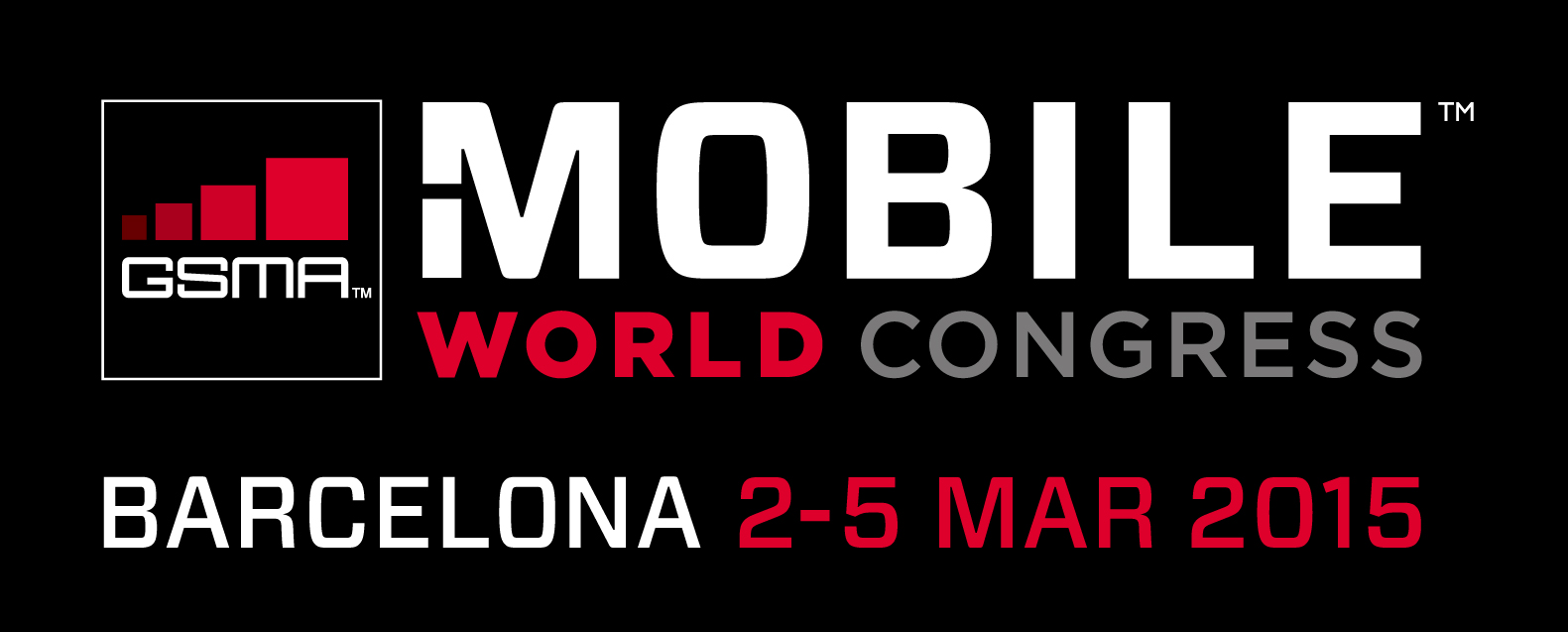Next week 86,000 people will attend Mobile World Congress in Barcelona. This conference strives to cater to EVERYONE--thus it's easy to lose your focus in the deluge of information. For those interested in disruptive technologies for the enterprise, Constellation Research's early adopter's guide to MWC will keep you on track. Keep these disruptive trends in mind while you're walking the floor, and have a successful MWC.

Mobile Workplace
 Organizations Must Embrace Mobile Not Just As A Device, But As A Way of Working
Organizations Must Embrace Mobile Not Just As A Device, But As A Way of Working
When people talk about mobile computing, thoughts usually turn to smartphones and tablets. While devices do play a role, mobile describes the larger topic of how people work in motion.
Although mobile transformation has clearly started, few organizations have completed a successful deployment. In a recent Constellation Research survey of 500 organizations, mobile transformation registered as a top priority for fifty percent of organizations, yet only thirty-six percent of organizations perceived their transformation projects as progressing satisfactorily.
Before attending MWC evaluate your organization's mobile transformation progress by identifying its position on Constellation's four-stage mobile transformation framework. Set your goals to advance stage by stage until transformation is complete.
Stage 1: Starting infrastructure (hardware and software) and resource (people and money) allocations to begin projects
Stage 2: Updating existing tools and processes to be accessible from mobile devices
Stage 3: Updating existing tools and processes to be leverage mobile specific features such as cameras, GPS, accelerometers, etc. and to work across a variety of device types
Stage 4: Implementing new tools and/or processes that change the core business (products, services, revenue models, etc.) of the organization
While browsing the floor at MWC remember that while devices are critical components of mobile transformation, devices themselves do not represent true transformation. Devices, including smartphones and tablets represent only the tangible side of mobility. Holistic mobile transformation a simultaneous implementation of devices with the changes in work patterns they enable.
IoT for Matrix Commerce
 By Guy Courtin
By Guy Courtin
This year's Mobile World Congress will heavily emphasize what else...the Internet of Things (IoT). Expect to hear a lot about connected homes, connected cars, and how IoT is spilling beyond these areas deeper into the supply chain.
Early adopters should keep their eyes peeled for next generation IoT applications in transportation, manufacturing, warehousing and other parts of the extended supply chain.
The IoT market for commerce isn't as solid as the futurists speaking at MWC will have you believe. Players are still jostling for position, making planning for IoT a little tricky. Try to get a sense for the direction this budding technology market is heading when it comes to standards and IoT platforms. Are we moving closer to standards that will make the connectivity between networks simple? Or is IoT continuing down the path towards specific platforms and standards for different parts of the IoT ecosystem?
Nextgen Apps
 The proliferation of mobile devices coupled with advances in cloud technology will push the development of nextgen apps. Mobile devices serve as modern mobile computing platforms. To serve these platforms, enterprises must build new applications to satiate the growing demands of devices and users. Enterprises will experience demand to iterate at an accelerating pace. Embrace these new demands as an opportunity to evolve and innovate.
The proliferation of mobile devices coupled with advances in cloud technology will push the development of nextgen apps. Mobile devices serve as modern mobile computing platforms. To serve these platforms, enterprises must build new applications to satiate the growing demands of devices and users. Enterprises will experience demand to iterate at an accelerating pace. Embrace these new demands as an opportunity to evolve and innovate.
Holger Mueller describes how organizations can harness trends in mobile to drive innovation.
1. Understand Mobile is more than Mobile. Given that modern mobile applications run in the cloud, they are mostly also created and built with cloud tools. Realizing that these development tools should be more than mobile only tools, but help to craft an overall nextgen apps strategy is a key aspect selecting these tools.
2. Embrace UI Innovation. Enterprises should plan for 6-9 month UI innovation cycles. The pace of innovation of UI is mostly seen as a burden, but Constellation views this as an opportunity to achieve better and more engaging user experiences. The readiness of users to consume apps is phenomenal -embrace the change and leverage it to an enterprise's advantage or risk being left behind.
3. Empower the business user. Most modern development tools have become so easy to use that a business user can build pretty robust and functional rich mobile applications. Empowering the business user is the right strategy as it empowers the business user to make first hand decisions on the respective mobile application, without the delay and risk of 'loss on translation' when working with a technical team.
Mobile Identity
 Steve Wilson makes the case for using mobile identification to phase out passwords.
Steve Wilson makes the case for using mobile identification to phase out passwords.
One of the most important trends in the past 10 years is the adoption of smart mobile technology for identity management. The mobile phone is the ideal identity device. It integrates authentication directly with the apps that need it; it's a natural second factor; it's ubiquitous and you notice within minutes when it's lost or stolen; and a mobile phone's built-in cryptography provides smartcard-grade authentication. All those critical identity documents and credentials we carry around in our pockets will soon be managed in secure mobile wallets, with vastly improved privacy. All the major SIM card and mobile firmware providers have major plays in the identity management plumbing, including G&D, Gemplus, Oberthur and Trustonic. And they're all parlaying advanced SIM technology into Machine-to-Machine security in the Internet of Things.
Biometrics and mobile devices go together like strawberries and cream. Voice recognition leader and FIDO Alliance member AGNITiO will be demonstrating new technology to the "Showstoppers" press event on Sunday afternoon.
The GSMA has been collaborating in the past 12 months with the Open Identity Foundation - another sign of how identity and access technology is integrating in the personal device UX. So I'm looking forward to presentations from the likes of John Bradley from Ping Identity and David Pollington from GSMA.
Constellation likes to say that privacy is the inverse of identity: If identity management is what you need to know about someone, privacy management is what you don't need to know! And it's great that privacy gets its own sessions at MWC too. Check out the "User Centered Privacy" panel on Monday afternoon. A strong set of speakers will unpack transparency, choice and control over data in a connected world where information is being broadcast and absorbed more and more continuously.
Highlights:
- Ensuring User-Centered Privacy in a Connected World Monday 16:00 - 17:30
- Keynote: The New Mobile Identity Wednesday 9:15
- SIM: Subscription, Identity and Money Wednesday 11:30 - 13:30
- Navigating the Mobile Contactless Payments Landscape Thursday 11:30 - 13:00
And if you can't be there in person -- or if you just can't be in all places at once -- follow the privacy discussion on Twitter at #MWC15PRIV.
Customer Experience, Branding
 Seamless customer experience means consistent branding (not to mention fulfillment of brand promises). Mobile means more channels to manage, but also introduces technologies that can efficiently deliver consistent customer experiences.
Seamless customer experience means consistent branding (not to mention fulfillment of brand promises). Mobile means more channels to manage, but also introduces technologies that can efficiently deliver consistent customer experiences.
In the digital era, customer experience determines winners and losers. However, as with marketing, analog methods will not work in a digital world. Now is the time to embrace mobile customer experience. Natalie Petouhoff explains how.
1. Evaluate your Mobile Customer Experience Strategy: Billions of people are going mobile, so consider how your company is (or isn’t) expanding it’s ability to use mobility to its advantage by examining how your customers will interact with your company via mobile. Strive to create ubiquitous customer experiences, be where your customers are, whenever they are there. Forget multi and omni-channel. Those are either company centric or not truly seamless. Invest in your customers where your customers are: in mobile ubiquity.
2. Prepare a Gameplan: Because some of the most innovative companies in the mobile space will be attending, you’ll want to really set your sights on exploring as much as you can over the four days. Prepare yourself by reviewing your current mobility strategies, set your mobile strategy goals, and then map out the gaps so you have a roadmap to advance from where you are today.
Is your company interested in app technology, cloud capabilities, sustainability or wearables? If you are not sure, there will be plenty of examples of leading brands, for example— AT&T, Jasper, KT Corporation, Oral-B, Sierra Wireless and Vodafone— demonstrating how to deliver fully-integrated, immersive experiences, and showcasing technologies designed to make our cities a smarter, greener, and healthier places to live.
3. Consider new mobile-enabled realities.
The always-on, always-connected nature of mobile enables every employee to serve as a customer service representative, sales representative, or social media marketer. This shift, however, must run in the company’s DNA. Start planning your mobile transformation now so you can take advantage of this enormous opportunity to harness the power of mobile to transform your organization.
Post MWC Action Plan
 Don't let all that inspiration go to waste. R "Ray" Wang explains how to translate inspiration into action.
Don't let all that inspiration go to waste. R "Ray" Wang explains how to translate inspiration into action.
Use Mobile As The Gateway For Your Enterprise Digital Transformation Projects
Constellation believes that mobile is more than just the device. While smart phones and other devices provide a key enabler, design in digital transformation should take into account how these technologies address the business value and business model transformation required to deliver on break through innovation. These devices provide the sense and respond, the interactivity, and the connectivity required for digital transformation. In applying mobile solutions to the solution design point, Constellation recommends that clients:
1. Assess how third generation enterprise mobile apps can change the business. Constellation recommends that clients seek the most common, cross-functional business problem that cannot be solved with linear thinking. Articulate the business problem and benefit. Show how the solution orchestrates new experiences. Identify how analytics and insights can fuel the business model shift. Exploit full native device features. Seek frictionless experiences.
2. Determine whether to build, buy, or modify. Given the scarcity of third generation enterprise mobile solutions, most organizations fear the need to staff up large mobile app dev shops. Where solutions have been developed, expect to take these solutions as a platform to expand from. Where solutions have not been developed, Constellation suggests that organizations who have strong app dev shops, standardize on a mobile app platform for development. For those who lack the resources or would prefer not to staff up for mobile app dev, Constellation suggests engagement with design shops and system integrators who have platforms that can scale for the rapid of pace of change in mobile development.
3. Plan for a mobile experience workshop. As part of the design thinking process, clients move beyond the inquiry or exploratory conversation to solidify objectives. The process starts with a proof of concept, road mapping engagement, and then the actual enterprise mobility project. The process often results in quick wins for the business side and cuts cost out of the IT budget.









